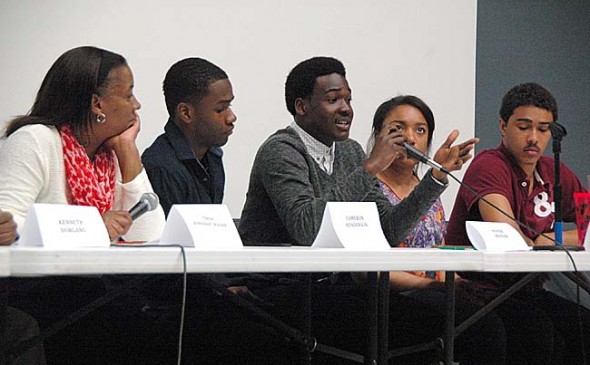
Current and former Yellow Springs High School students spoke about racism in the local schools and how to empower local black youth at a panel discussion April 21 at AU Midwest. Panelists are, from left, Teresa Bondurant-Wagner, Cameron Henderson, Hafiz Mensah, Taylor Beck and Edward Johnson. (photos by Megan Bachman)
365 Project panel— Being young and black in the village
- Published: May 1, 2014
In some ways, it’s harder to be young and black in Yellow Springs today than in the 1970s.
While black students at Yellow Springs High School were once encouraged by teachers to speak out at the height of the black power movement, today they are a smaller minority who face more subtle racism, lowered academic expectations, and less connection with their culture and history, according to participants in a panel discussion on Monday, April 21.
At the same time, Yellow Springs schools continue to provide many black students with a strong liberal arts education, and in general the village has been more tolerant and accepting of them as individuals than neighboring communities, panelists said.
“I don’t think we have that rich of a curriculum or teachers to give us the pride in our heritage,” said panelist Edward Johnson, a YSHS junior. “It’s more up to us to build off each other and our ambition to learn more.”
In contrast, Teresa Bondurant-Wagner, YSHS Class of ’80, said that during the 1970s with a black principal, black vice principal and numerous black teachers, as well as some supportive white teachers, students at YSHS were encouraged to challenge the status quo and taught more black history.
“It is such a different dynamic now than in the ‘70s,” Bondurant-Wagner said. “In the ‘70s teachers were so open minded and along with the Black Power movement, gave us a whole lot of empowerment.”
The nine-member panel discussion, “Young and Black in Yellow Springs,” was organized by the 365 Project, and drew an audience of around 60 villagers — a roughly equal mix of white and black residents — to the Antioch University Midwest auditorium. The 365 Project, whose goal is to spark courageous conversations locally about African-American heritage and culture 365 days per year, previously organized panels on the experiences of local black elders and those who grew up in Yellow Springs in the 1960s.
Along with Johnson, other panelists who currently attend YSHS were Taylor Beck, Cameron Henderson, Hafiz Mensah, Rachele Orme, AnnDee Pettiford and Bryce White. The remaining panelists were Bondurant-Wagner and Ken Durgans, who also attended YSHS in the 1970s.
Current students on the panel lamented the fact that black history is relegated to a small repetitive unit during Black History Month in February, while Bondurant-Wagner recalled an entire course dedicated to black history in the ‘70s, which John Gudgel taught as a student teacher at the time. Students said that today they only learn about Martin Luther King Jr., Rosa Parks and a few other civil rights leaders and cover the same material every year.
“[Black history] deteriorates after middle school,” AnnDee Pettiford said. “During black history month we have nice posters around talking about Malcolm X, Jessie Owens … But there’s so much more to black history. We can go so much further because it is American History. It shaped our country and is our country.”
Bondurant-Wagner suggested that without learning their history, black students are hampered in their ability to understand their own identity and improve their situation.
“You have to know your past in order to know who you are and how you need to advance in the world,” Bondurant-Wagner said.
Hafiz Mensah, an exchange student from Ghana, said that with few black teachers at the high school, many teachers don’t know the history well enough themselves to understand its importance and instead “brush through the topic.” Cameron Henderson, who transferred to Yellow Springs Schools from Dayton in fifth grade, said that it’s not the lack of black history in the curriculum that’s at fault. The problem, he said, is that the relatively few African-American students at YSHS means that there’s not enough passion for black history, which can be “an emotional ride” for black students.
“At a predominantly black school [in Dayton] I was surrounded by that passion,” Henderson said. “It’s just not at Yellow Springs High School.”
Diminishing racial diversity in Yellow Springs is one reason why black students face a tougher time in the school, several panelists noted. According to the 2010 census, Yellow Springs now has 40 percent fewer people of color than in 1970. The African-American community specifically fell from a quarter of the population in 1970 to just 12 percent today. (An additional 7 percent now identify as “two or more races.”)
As a result of the local black population decline, many African-Americans here don’t have as strong a connection to African-American culture, Bondurant-Wagner said. Rachele Orme, who was adopted by white parents, said she chose to attend a historically black college next year for more exposure to black culture. Many students said they rely on their families for the African-American culture and history they may not get at school.
Current students said that academic expectations for black students are lower than white students, but also praised some of their teachers for encouraging them in their studies. Pettiford said that many times if a black student fails to turn in an assignment they get an automatic “zero,” but if a white student does the same, they are given more leeway.
“I work so hard, but the bar is set so low for me, and if there’s a white kid next to me, the bar is set high for them,” Pettiford said to rousing applause. Mensah said that while academic expectations for black students are lower, athletic expectations can be higher, as African Americans are sometimes expected to produce more on sports teams.
Pettiford went on to praise former McKinney teacher Pam Conine for encouraging her, pointing out that Conine made sure Pettiford attended an event to watch President Barack Obama be sworn in, which became a moving life experience. Bryce White said he was grateful that McKinney teacher Aurelia Blake pulled him aside before high school to impart the importance of taking advanced classes since there are few black students that do.
“It changed my entire perspective going into high school,” White said. “I wanted to work harder in school and get good grades because of her.”
Students said that their awareness of being black heightens when they leave the village, citing more discrimination outside Yellow Springs than inside. Still, many said they hear racist comments locally, including that they “act too white or too black.”
“When I talk educated I get called white and when I talk slang, I get called black and that’s wrong,” Johnson said. “It’s one of the ways racism manifests in Yellow Springs.”
Pettiford said that “white privilege” is currently evident among seniors at the school as students discuss where they are going to college and whether they can afford it. While some panelists said they haven’t seen much racism in the village, Pettiford and Bondurant-Wagner argued that while it is not as overt as in the ‘40s, ‘50s and ‘60s, racism still exists within and outside the village and that black — and white — students need to be prepared to deal with it.
“There is racism here. There is racism everywhere. We are not special. We are not different,” Pettiford said.
The Yellow Springs News encourages respectful discussion of this article.
You must login to post a comment.
Don't have a login? Register for a free YSNews.com account.
Parkinsons.jpg)



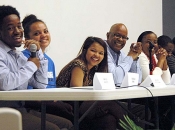
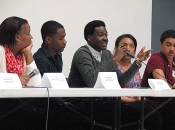
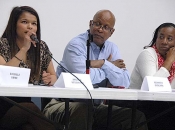
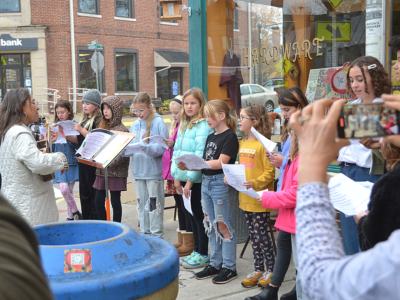










No comments yet for this article.